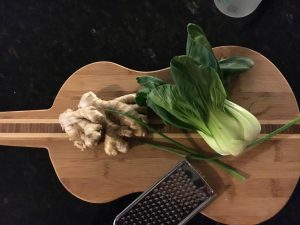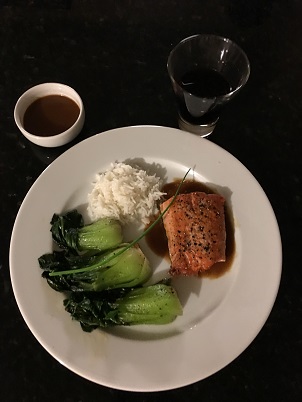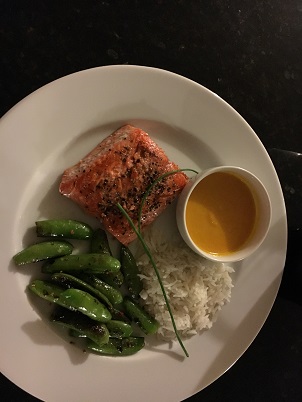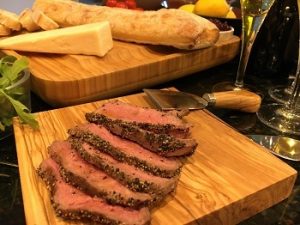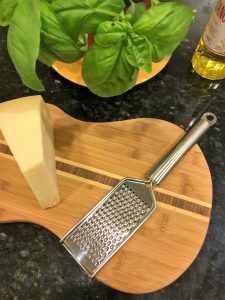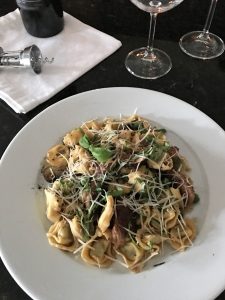Growing up, my Dad always made ribeye steaks on the grill for us. But we would always have pan-fried fillet steaks (Steak Diane) for dinner whenever great-Grandma Diane or Grandpa Jack was visiting with us. Let me tell you about my great-Grandma, Diane – she was an elegant lady from New York City back in the 1920s. I always remember our sophisticated great-Grandma Diane (who lived till the graceful age of 97) – she is still one of the best dressed ladies I’ve ever known.
According to my grandpa, Jack, ‘Steak Diane’ was great-Grandma Diane’s favorite. Nowadays my husband and I are the designated ‘Steak Diane’ hosts for our family.
I suppose there are many versions of ‘Steak Diane’. Our family recipe uses steak fillet, seared on the pan. We use the steak pan juice to make our steak sauce which includes butter, shallots, cremini mushrooms, garlic, beef stock, red wine, cognac, Worcestershire sauce, and Dijon mustard. Our sides are potatoes and mixed greens. We make ‘Steak Diane’ at least once a year on great-Grandma Diane’s birthday. We coined it ‘Jack & Diane Day” to honor great-Grandma Diane and her son, our Grandpa Jack. And, of course, we have compiled a playlist of the ‘Jazz age’ from 1920s to accompany our evening of celebration of life.
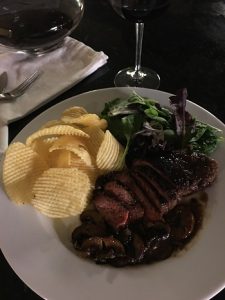
This set of pairings below is what we drink with ‘Steak Diane’ in our family gathering of ‘Jack & Diane Day” and, we always have the best time making our toasts to our elegant late great-Grandma Diane.
Here are our pairings to ‘Steak Diane’:
- Cognac – Grandpa Jack’s choice.
- Tennessee Whiskey – Dad’s choice.
- Canadian Whiskey – Mom’s choice.
- Earthy, not-aged Cabernet Sauvignons – my brother & my sister-in-law, my sister & my brother-in-law, my husband and my choices.
So, do we have the right pairings for our family version of ‘Steak Diane’? The fillet steak we use is seasoned with kosher salt and coarse ground black peppercorns, then it is pan-seared to medium rare. Our steak sauce is earthy, essence of steak and cognac. Our pairing is to complement our beautiful sauce.
- Cognac works. It complements the sauce, as it was flambéed with cognac.
- Tennessee Whiskey works. I don’t want to disagree with my Dad’s Jack Daniel’s. Jack Daniel’s uses charred oak barrels in its maturing process.
- Canadian whiskey. My Mom is always right.
- Earthy but not-aged Cabernet Sauvignons works. We usually have vintages from Napa, Sonoma and Wala Wala Valley. Our family members live in Northern California and Washington. We pick up boutique wines from various wineries that we have visited during the weekends. Then we sample and share our wines with friends and family on dinner gatherings at our home. As you have probably guessed – we love to cook and entertain at our home. (Our guests always stay at our home after dinners, and leave after breakfast in the morning. No ‘drink and drive’ for us.)
Fun note: I always keep the wine corks whenever we dine with Grandpa Jack – time spent with our loved ones are cherished memories.
Why do we pick not-aged Cabernet Sauvignons to pair with our version of ‘Steak Diane’?
- We want a Cabernet Sauvignon that has a less predominant flavor of acid or tannin, but notes of currant or blackberry that would complement our ‘Steak Diane’. Hence our preference of Northern California Cabernet Sauvignons that are (in general) less austere but still rich yet soft. Of course, each wine maker has his/her intent of what characteristics are for their wines (in addition to the characters of a wine region); there are many Northern California Cabernet Sauvignons that are structured and aged in Bordeaux style.
- We want a not-aged Cabernet Sauvignons. Sometimes (again, in general) an aged Cabernet Sauvignons can be oaky. We don’t want other prominent flavor to dominate our beautiful and earthy steak sauce.
You might like to read our article on: The king of red wine – Cabernet Sauvignon.
Quick tips about serving Cabernet Sauvignons:
- Temperature. In our opinion, many people tend to serve red wine too warm using a rule that says serving red wine in room temperature. We cannot image a room in the Arizona desert will have the same temperature as a room in the Scottish highlands. We find that red wine serving at 65°F works the best.
- Wine glasses. You have the right wine paired with your star entrée, you want to serve your wine with the right glass at this memorable dinner. Glass body shape and mouth matter. Choose a red wine glass (view on Amazon) with an oval-shaped body (bowl) that is narrow at its mouth for your many red wines such as Cabernet Sauvignons, Bordeaux, and Merlot.
- How full to fill up the glass? You want to leave room to swirl and smell the wine. For red wine, one-third or a hint over that will give you margin to swirl and not to spill.
P.S. On another day, we will share with you – our Bordeaux cabernet sauvignons pairing for ‘Steak Au Poivre’.
